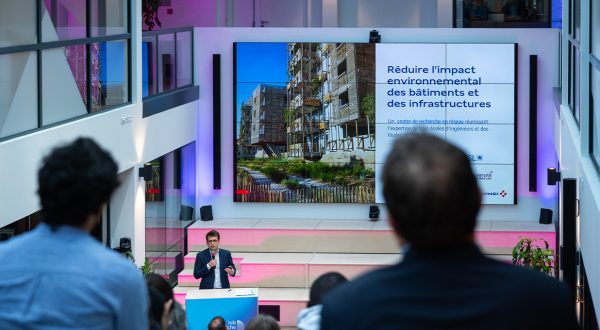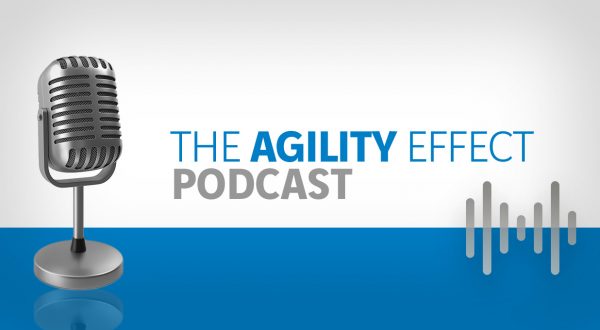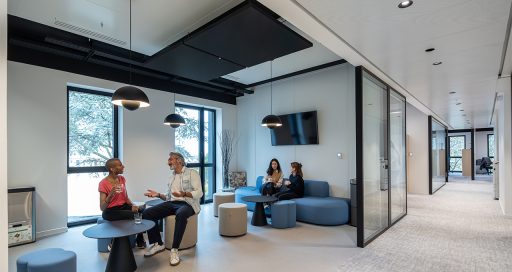Isabelle Spiegel, Global Head of Environment at VINCI since August 2019, sets out the Group’s goals which include implementing a new environmental roadmap and creating an Environment Award.
![]()
In January 2020, VINCI unveiled its environmental roadmap. Is this a continuation of efforts already under way or a marked acceleration in measures?
Isabelle Spiegel. A commitment to “promoting green growth” was incorporated into the VINCI manifesto in 2009. This meant seeking to reduce our greenhouse gas emissions by 30% by 2020, a target we are on track to meet. But if we are to fully play our part in limiting temperature rise to 2°C, then we need to step up our efforts and push the boat out even further. That’s where the new roadmap comes in and its new target to cut CO2 emissions by 40% by 2030.
To what extent does the SARS-CoV-2 pandemic change the equation?
Isabelle Spiegel. The entire VINCI Group executive committee decided to continue our efforts for the environment despite the pandemic. It’s crucial for the planet and it’s crucial for the long-term viability of our operations. Our objectives have a 10-year timeframe, so there is no reason to revise them in the light of coronavirus. However, we will have to make adjustments in the short term in order to take account of the overall economic situation. Some actions may be moved back several months. Conversely, we’ll probably have to speed up in other areas, especially environmental solutions for growth. Recovery must be “green” – on that we are all clear.
What major levers will the Group pull as it moves forward in implementing its environmental goals?
Isabelle Spiegel. One of the Group’s strengths is knowing how to mobilise its workforce around shared commitments and objectives. That’s already happening with safety, for example. Each of VINCI’s 222,000 employees must contribute to the transformation that this new roadmap aims to bring about. This will involve setting up common tools and reference systems, of course, but they’ll need to be used as part of a decentralised and agile approach within business lines, markets, regions and with clients. Each level will be responsible for setting its own priorities to meet the 40% reduction in CO2 emissions goal.
“The Environment Award must bring together our movers and shakers and help share good practice.”
Is 40% an average for the VINCI Group?
Isabelle Spiegel. Yes. It’s the outcome of consolidated action plans which were drawn up over a period of a few months to reflect each business line. It breaks down as follows: 50% for VINCI Construction and VINCI Airports, 30% for Eurovia and 40% for VINCI Energies.
Have you identified any factors that might hamper the implementation of this new roadmap?
Isabelle Spiegel. There’s nothing really to hamper it anymore in terms of awareness – that’s now a given everywhere. But the business model is not always clear in every country and in every business line. In North America, for instance, energy prices are much lower than in Europe, and that has a significant impact on return on investment. Furthermore, some of our clients don’t formulate clear environmental requirements. That can remain an obstacle in a company like VINCI whose culture is underpinned by execution excellence in strict compliance with client expectations. It’s up to us to be proactive, to be bold in addressing the environment with our clients and to put forward solutions!
How do IT and digital technology contribute both to the problem and the solution?
Isabelle Spiegel. Digital technologies account for around 4% of CO2 emissions in the world. That’s a fairly small share, but it’s increasing very quickly. Globally, more than 50% of emissions come from construction and transport – sectors that we operate in, so these are our levers. But coming back to IT, the rise in emissions must be curbed, which means implementing robust technological solutions. However, technology alone is not enough, everyone is aware of that. The small everyday actions that each of us can perform also serve as a powerful lever. By using a hybrid excavator on site, I can reduce my emissions by 20 to 25%, and by adopting eco-driving techniques I can add an extra 15 to 20%. And if each of VINCI’s 222,000 employees delete 10 emails from their recycle bin every day, 200 days per year, then that will cut the Group’s total emissions by 0.2%.
How will you measure your action?
Isabelle Spiegel. We’ve established three areas for action, which involve working to promote climate transition, optimising resources via the circular economy and preserving natural environments. We’ll measure this action at two levels: at consolidated Group level, using environmental performance indicators (including greenhouse gas emissions), and at business line level and with clients, using deployment indicators controlled in a decentralised way.
What governance system are you putting in place to manage all of this?
Isabelle Spiegel. A 3-tier system is being set up. At VINCI board level, the issue will be taken up by a CSR strategy committee, which will report on progress annually. Plus, executive committee meetings focusing on the environment will be held several times a year. And finally, an environment committee, including each of the sustainable development directors from our business lines (Corinne Lanièce, general counsel, for VINCI Energies), will meet once a month.
VINCI is introducing an Environment Award as part of these new goals. What does it involve and what are your objectives?
Isabelle Spiegel. Like the Innovation Award that has been so successful in the Group, the Environment Award is internal to VINCI. The aim is to bring together our movers and shakers. The environment is everyone’s business at VINCI. The aim is also to share local initiatives and good practice. Everyone can get involved, apply and vote using an ad hoc digital platform.
The Environment Award will launch on 22 September 2020 to coincide with VINCI’s first “Environment Day”. Employees then have 5 months to submit their applications. In June 2021, there will be a round of regional award ceremonies (8 regions in France plus international regions: Northern Europe, North America, etc.) before the grand finale in September 2021.
How is VINCI Energies getting on with VINCI’s new environmental goals?
Isabelle Spiegel. I’ve been able to check that the various VINCI Energies business lines have taken ownership of the three strands of the VINCI Group’s new environmental roadmap. Each employee, at every level of the company, is in a position to adapt the roadmap to their particular challenges and priorities. That doesn’t surprise me as the ability to adapt to the situation on the ground and a “client solutions” approach are VINCI Energies characteristics.
In your opinion, what are the key dates in the development of environmental awareness? What triggered the process?
Isabelle Spiegel. The first date – and trigger – was without a doubt the UN’s Our Common Future report, also known as the Brundtland Report, published in 1987, which defined sustainable development as ensuring the ability of future generations to meet their own needs. The second key date was December 2015, when the Paris Agreement was adopted at the COP21 climate conference. This was the first time that the topic, till then limited to the worlds of science and government, was taken up by civil society and business. The third date, or rather the third stage, is currently under way. It started in 2019 with increased global public awareness and a sense of urgency.
14/09/2020





